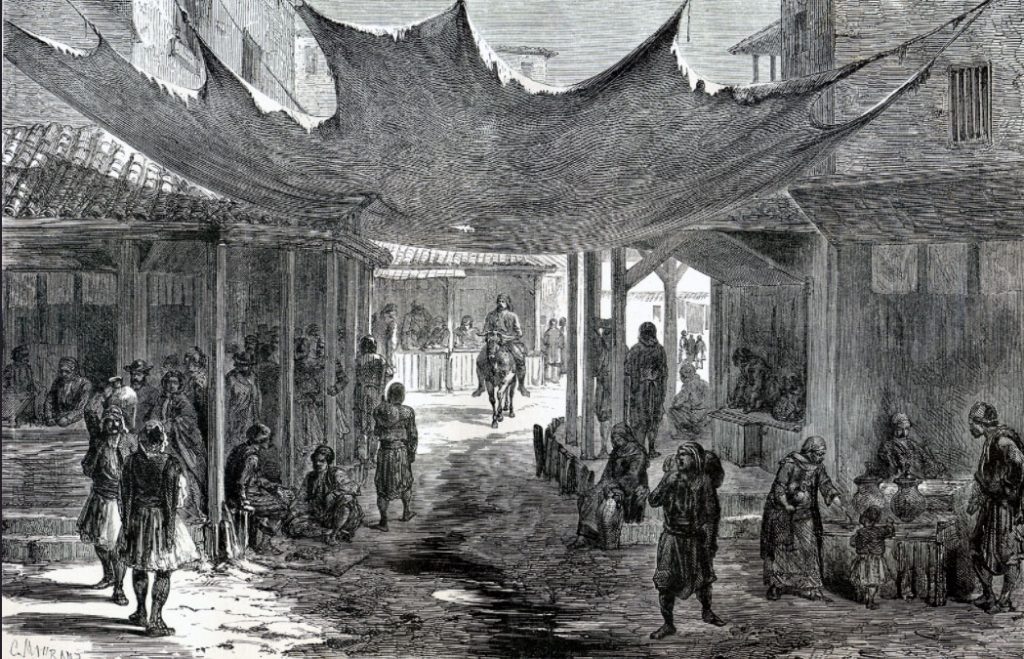
Recently one of the longtime players in my current group has moved behind the screen and taken up the DM mantle. He’s a tabletop veteran, but doesn’t run games very often. He’s currently running a 5e campaign where magic items are for sale. We’ve played two sessions so far and as a 7th level PC my cleric has three uncommon magic items.
If you’ve played some 5e campaigns that might seem a little magic item heavy. By the end of the first session I worried it would go full Monty Haul. Between sessions I took a look at the DMG, pg 38. Two-three magic items of uncommon/rare quality falls within the standard and high magic campaign guidelines. Not an issue and shouldn’t become one thanks to 5e’s attunement mechanic. My 7th level cleric is already flush with attuned gear.
I suspect I’ll have some difficult gear decisions to make once we encounter more rare items.
The major difference with this campaign to the 5e norm is magic items are available to buy. The latest treasure reward garnered each PC a cool thousand gold to buy rare or more common items. Not every rare item was available for purchase. Unfortunately our dreams to derail the campaign using Daern’s Instant Fortress (DMG, pg 160) were quickly dashed by the DM.
So I thought well, how rare are magic items for sale? Fifth edition’s core assumption is that magic items are not available for sale. As someone who didn’t play 3/3.5 D&D in its heyday this seems normal to me. But, I play with many players where 3/3.5/Pathfinder is their D&D point of reference. In those systems magic items are accessible to buy. One of those players includes the current DM so naturally magic items are available.
So then what is a reasonable availability for magic items? I thought settlement size to be the logical framework. With my own DM/Worldbuilding I break settlements down into five categories.
1. Small Village: 50-400 pop.
2. Large Village: 400-1,000 pop.
3. City: 1,000-10,000 pop.
4. Major City: 10,000-400,000 pop.
5. Capital: 400,000+ pop.
So what is a settlement’s purchasing power?
Purchasing Power in GP = Settlement Population / 20
So for each of my settlement types:
⦁ Small Village: 2.5-20 GP
⦁ Large Village: 20-50 GP
⦁ City: 50-500 GP
⦁ Major City: 500-20,000 GP
⦁ Capital: 20,000+ GP
So I just cross reference this with the Magic Item Rarity table (DMG, pg 135).
Magic Item Availability
⦁ Common: City+
⦁ Uncommon: City+
⦁ Rare: Major City+
⦁ Very Rare: Major City+
⦁ Legendary: Capital
This seems reasonable. Villages are unlikely to stock even the most common potions and scrolls. PCs looking to buy rare or better magic items they’ll need to stop by a major city.
A settlement’s purchasing power can also work in reverse. If the PCs are looking to unload magic items, rare gemstones, and fine artwork they’re not likely to find a buyer in a village. But, fancy treasure will pique the interest of wealthy aristocrats and major merchants found in a large city. I can easily imagine a storied auction house like Sotheby’s operating out of a large capital city. It is the place to buy/sell magic items.
You could extract purchasing power out to what mundane items are available for purchase at a settlement. It works all right as a stopgap, but I wouldn’t utilize it as the baseline for mundane gear purchase. D&D pricing/economics has always been wonky so it’ll fall apart if you try to impose it as a standard.
Here’s a quick example:
The party has finished up their introductory adventure and are eager to move on from the small village (350 pop.). They’re interested in procuring horses for the two week journey. So how many horses are available in the village? The small village’s purchasing power is 17.5 GP (350/20). A riding horse is 75 gp. Buying a decent riding horse is like buying a luxury automobile at MSRP with cash in hand. This little village doesn’t have any riding horses. But, they can part with a pair of pack donkeys to carry the party’s gear for 16 gold (8 GP each).
